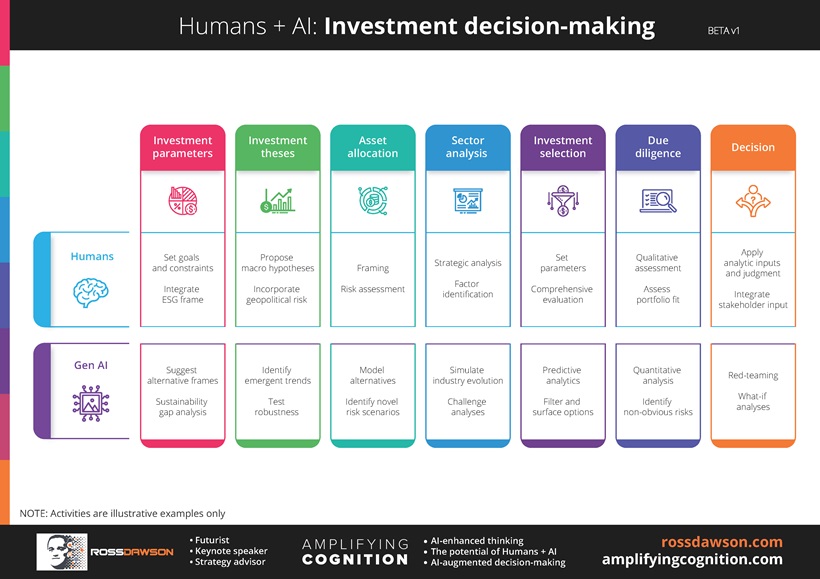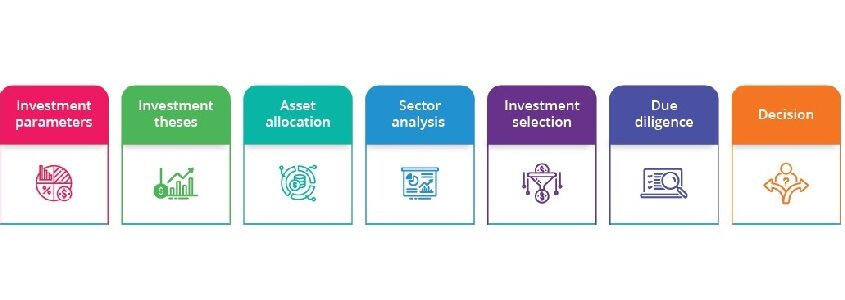Framework: Humans + AI in institutional investment portfolio decision-making
The primary application of my Humans + AI work over the last 18 months has been in strategic decision-making, working with boards and executive teams to augment their decision-making processes and outcomes using generative AI.
The other major Humans + AI application I’ve been working on is in institutional investment decision-making. I am currently shifting more of my attention and work into this space.
This framework provides a very high-level slice of a few of the many human and generative AI roles in different phases of portfolio decision-making.

Click on the image for full-size pdf
The activities indicated across the human and GenAI phases are illustrative only. There are a wide range of other potential roles.
As in other Humans + AI frameworks I’ve shared, each of these roles can and should involve both humans and AI.
Here is a brief description of the highlighted GenAI roles across the investment phases.
Investment Parameters
Suggest alternative frames: Proposes different options for investment parameters based on objectives and hard constraints.
Sustainability gap analysis: Analyzes where current parameters may negatively impact sustainability objectives and alternatives.
Investment Thesis
Identify emergent trends: Surface trends in consumer behavior, industry sectors, and macro economy that could impact investment decisions.
Test robustness: Identify across a range of scenarios where proposed investment hypotheses would be resilient or deficient.
Asset Allocation
Model alternatives: Examine potential outcomes for a range of alternatives to asset allocation using qualitative parameters.
Identify novel risk scenarios: Propose new, unforeseen, or multi-factor risk scenarios that could affect asset allocation.
Sector Analysis
Simulate industry evolution: Provide a variety of scenarios for the industry evolution, competitive landscapes, and profitability.
Challenge analyses: Critical evaluation of sector forecasts by identifying complementary perspectives to enrich models.
Investment Selection
Predictive analytics: Predictive analyses using domain-unbounded superforecasting methodologies to complete machine learning models.
Filter and surface options: Swiftly assess and propose specific assets to match portfolio strategies while highlighting critical factors.
Due Diligence
Quantitative analysis: Perform quantitative analyses to assess the financial health of potential investments.
Identify non-obvious risks: Gen AI identifies subtle and non-obvious risks that might be overlooked in traditional due diligence.
Decision
Red-teaming: Red-teaming exercises to identify key assumptions and provide incisive counterpoints to investment proposals.
What-if analyses: Identify relevant scenarios and model decisions against multi-dimensional variations in investment context.
Coming from a capital markets background, I believe there is little more valuable than improving the allocation of capital for superior financial and social outcomes.
The considered application of GenAI for a Humans + AI investment process probably has the greatest potential for positive impact in this space.
I will be sharing more of my work in this space as there are frameworks and insights that can be shared publicly.



